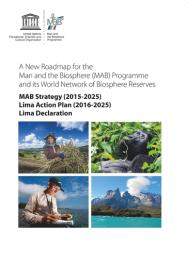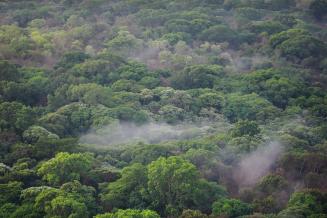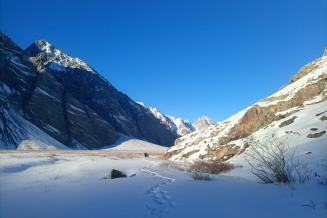
About the Man and the Biosphere (MAB) Programme
It combines the natural and social sciences with a view to improving human livelihoods and safeguarding natural and managed ecosystems, thus promoting innovative approaches to economic development that are socially and culturally appropriate and environmentally sustainable.
By focusing on sites internationally recognized within the World Network of Biosphere Reserves, the MAB Programme strives to:
The Man and the Biosphere (MAB) Programme has laid the scientific foundations fora new harmony between humans and their environment – one that reconciles conservation and development, and teaches us how to live with the living world, in the living world, rather than at its expense.

UNESCO Biosphere Reserves designated in 2023
Timeline of MAB's history
For more than half a century, UNESCO’s Man and the Biosphere programme has led a global quest to rethink the ties between people and planet.

Contacts
Secretariat
Man and the Biosphere Programme
UNESCO
7, place de Fontenoy
F-75352 Paris 07 SP
France
E-mail: mab@unesco.org
Office of the Director
Meriem Bouamrane
Chief of the Section on MAB Research and Policy: Ecology and Biodiversity
Patricia Rame
Office assistant
Maria Rosa Cardenas Tomazic
Associate programme specialist
Barbara Avila
Project officer
Tiina Greggila-jouini
Programme assistant
Maximilien Guèze
Associate project officer
Hélène Le Brun
Associate project officer
Ana Catarina Luz
Associate project officer
Hans Thulstrup
Chief of the Section
Amandine Callens
Programme assistant
Manoel Giffoni Da Silveira Netto
Associate project officer
Marie Prchalova
Programme specialist
Philippe Pypaert
Programme specialist
Yang Bo Kim
Expert
Yueyu Zou
Programme specialist
Regional officers
The UNESCO Regional Officers are responsible for the implementation of the MAB Programme of UNESCO at the regional level. Regional Officers are posted in the field and serve as focal points for all issues relating to the Programme, both at regional and national levels.
Strategy and Framework
In 2025, the upcoming 5th World Congress of Biosphere Reserves will develop the new 2025-2035 MAB Strategy in Hangzhou, China. The new roadmap will re-visit the role and the scope of MAB Programme in the context of the conclusion of the 2030 Agenda for Sustainable Development and its Sustainable Development Goals (SDGs). This roadmap will be accompanied by an action plan, guiding the programme’s implementation.

This Statutory Framework sets out the conditions for the functioning of biosphere reserves and the World Network of Biosphere Reserves. It was adopted by the UNESCO General Conference in November 1995.











